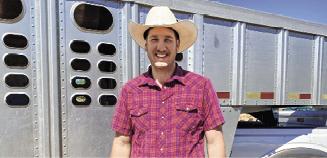From the Fields - Daniel Jones

Photo/Courtesy Daniel Jones
By Daniel Jones, Solano County farmer
Many walnut orchards are being ripped out due to high input costs and low returns. The gentleman who owns the walnut orchards I manage is going to keep his Tulares and Chandlers. The idea is that we survive this low-price storm. Granted, you can only be in survival mode for so long.
A lot of walnut orchards, at least in this area, were planted on Class 1 soils. They’ve been converted to higher-earning crops, such as processing tomatoes. Prices are at an all-time high for processing tomatoes, so a lot of the ground that was formerly orchards is going back to row crops. I am happy to see the Class 1 soils used for the highest and best possible use. Urban development and urban encroachment along the Interstate 80 corridor have pushed into some of the prime growing ground. That’s always a concern. Development should happen at a controlled pace.
I’ve hired out for both large baling and small baling, and this year, I purchased a small baler and started making bales on my own. In the summertime, we grow a winter forage mix. This year, we cut a lot of volunteer grasses that were just naturally occurring on open fields. We did this on highway frontage property for fire prevention and to clean things up. This irrigation season is in full swing across all crops and commodities.
In Glenn County, we have a cow-calf operation that has been lucrative this year. It is a great time to be a livestock producer. Pricing has been up across all weight categories. Hay prices have fallen after the good winter, and there’s grass in the hills, so there’s plenty of hay around. That’s a really good combination that doesn’t happen too often for California producers. We bring in our cattle to sort and wean calves in early summer, so we’re gearing up to do that this week.




